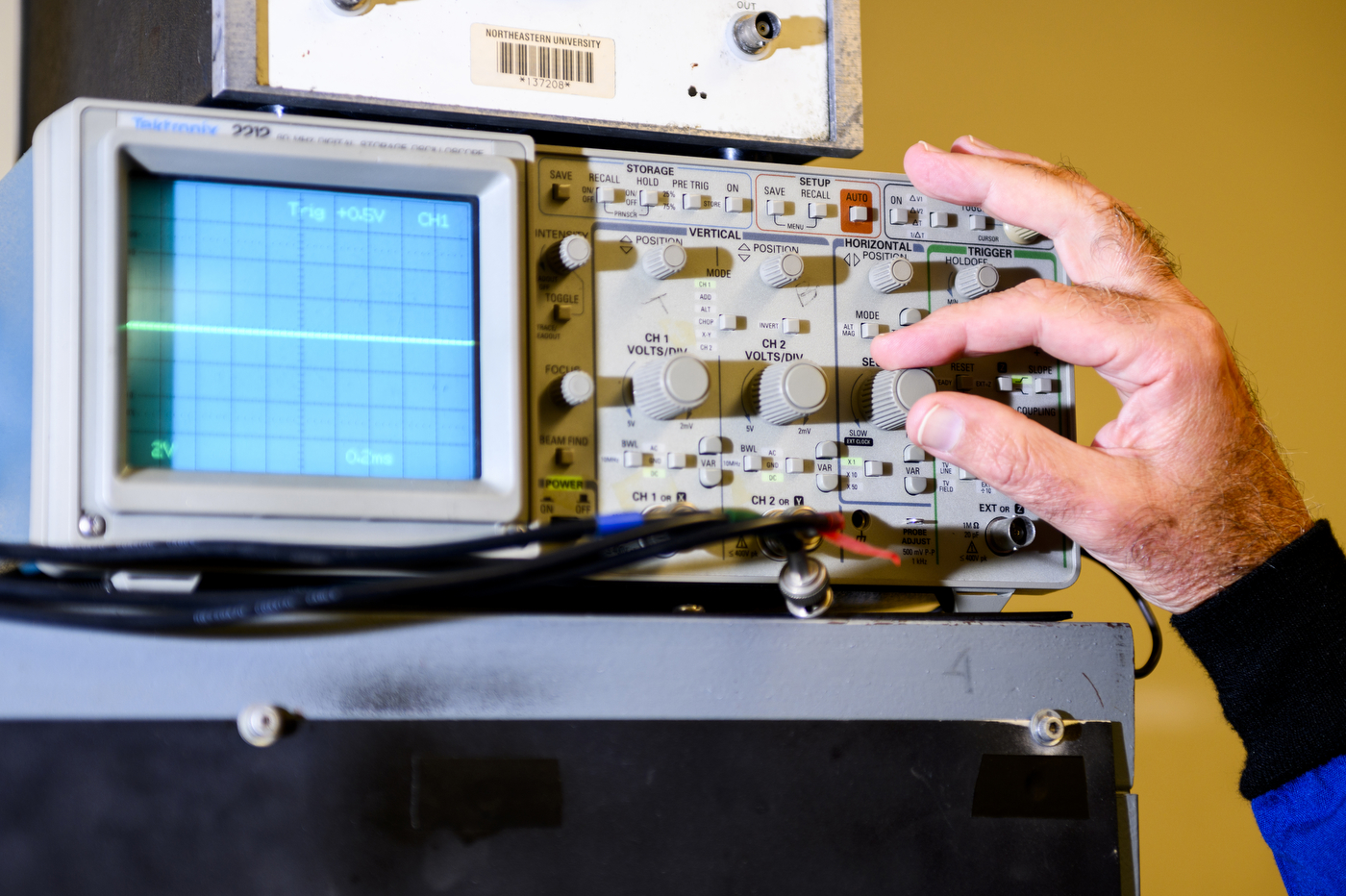Iron powder could soon become renewable energy resource, Northeastern researchers say

Burning iron could soon offer an abundant green energy source to help meet the world’s growing energy needs, according to Northeastern experts.
A group of Northeastern scientists have secured an award from the National Science Foundation to improve the process of burning iron to produce carbon-free renewable energy.
The NSF awarded Yiannis Levendis, distinguished professor of mechanical and industrial engineering; Hameed (Mohamad) Metghalchi, professor of mechanical and industrial engineering; and Randall Erb, associate professor of mechanical and industrial engineering, a three-year grant to study burning iron particles as carbon-free circular fuel.
The iron fuel cycle could offer a green energy source and storage methodology, the scientists say.
“It is one of the many elements of the solution to global warming,” Levendis says. “It is not something that’s going to provide us a solution for everything, but it is going to contribute to these alternate methods that we are looking at.”



Although natural gas has been a relatively inexpensive and cleaner substitute for coal, Levendis says, it provides only a 50% reduction of carbon dioxide.
“It is considered more of an intermediate fuel now until we get better solutions,” Levendis says.
Other clean fuel options like biomass, or organic materials from plants and animal waste that can be converted into energy, are finite, and some countries, like England, for example, have to import it.
Iron is one of the most abundant elements on Earth, Levendis says, and burning it does not produce greenhouse gases. With some fine-tuning, this energy source could be used in existing power plants, he adds.
The Northeastern scientists say their research will contribute to making the process of generating energy from iron powder a reality.
The idea of burning iron is not intuitive at all and surprises most people, Levendis says. But if iron is converted into talc-like powder with particles smaller in diameter than a human hair, he says, it will burn under certain conditions just like coal.
“If you dry-spray that [powder], you can ignite it as an aerosol and then you can burn it,” Levendis says. “The combustion of iron is not very different from the combustion of pulverized coal. So this material can be burned in existing utility boilers and generate electricity eventually.”
Combustion is a rapid chemical reaction of a substance with oxygen, involving the production of heat and light. Combustion of various metals is used in pyrotechnics, for example, Levendis says, to produce light of different colors.
The product of coal combustion is carbon dioxide, which is one of the greenhouse gases and is bad for the atmosphere. Iron oxides produced as a result of burning iron are solid. These solid particles can be caught with filters and reduced to iron again in a chemical reaction with hydrogen and some electricity.
“Then you can burn it again, generate electricity, capture it [iron oxide] and reduce it back to iron,” Levendis says. “So it is circular fuel.”
The energy emitted during combustion (heat) can be used to generate steam, he says, which, thereafter, can spin a steam turbine and generate electricity.
The process of burning iron requires some energy to conduct these chemical reactions. Since the sun is only available during the day and wind energy is available only when wind blows, Levendis says, it would be wise to store some extra energy in the cycle of reduction of iron.
“That is not only a circular tool, iron, but it is also good for storing,” he says.
There are some other small byproducts that are generated during the combustion.
“We’re looking into all of these things,” Levendis says. “We’re looking at how to make this a better process, a more agreeable process.”
Since iron is plentiful, he says, it can be purchased at a reasonable price, or resourced from scrap metal. Other costs will include pulverization of iron, reducing the generated oxides back to the metal and scaling the process.
Alena Kuzub is a Northeastern Global News reporter. Email her at a.kuzub@northeastern.edu. Follow her on Twitter @AlenaKuzub.






